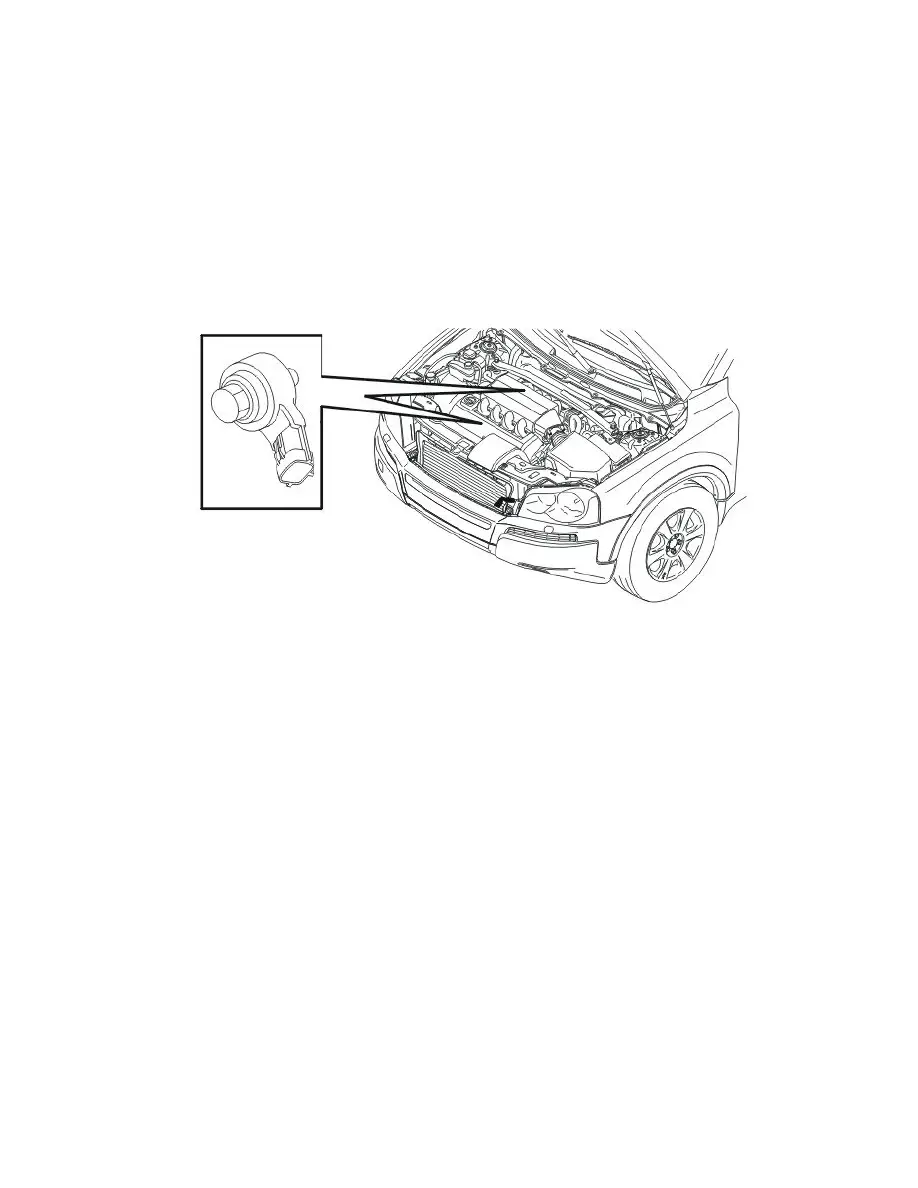XC90 AWD V8-4.4L VIN 85 B8444S (2005)

running).
By-pass valve
When the injectors close when the pressure is too great (during engine braking for example) there is a pressure peak. The by-pass valve in the fuel pump
(FP) is used to even out the pressure peak. The opening pressure of the valve is approximately 650 kPa.
The by-pass valve also functions as a non-return valve, ensuring that the fuel pressure in the system is maintained when the engine is switched off.
There is high pressure before the engine is started. This high pressure means that the valve in the by-pass valve opens and the system is "flushed".
Passive safety
For safety reasons, the engine control module (ECM) shuts off the fuel pump (FP) if the supplemental restraint system module (SRS) detects a collision.
Knock control
Knock occurs in the combustion chamber when the fuel and air mixture self ignites. This can occur either before or after the spark plug has produced an
ignition spark. In both cases the gas in two or more places ignites in the combustion chamber.
This results in an extremely fast combustion process with flames from several directions. When these flames collide, the pressure in the cylinder
increases rapidly and there is a mechanical knocking sound.
If one of the cylinders starts knocking there will be a certain type of vibration in the engine block. This vibration is transferred to the knock sensor, which
are screwed to the engine block. One knock sensor detects knocking on cylinders 1, 2, 3 and 4. The other one detects knocking on cylinders 5, 6, 7 and 8.
The mechanical stress that arises in the piezoelectric material of the knock sensors makes them generate a voltage. With the help of the camshaft position
sensor and the impulse sensor, the Engine Control Module (ECM) can then determine which cylinder is knocking.
The knock sensors (KS) also interpret a proportion of normal engine sound. The control module is able to recognize the vibrations which correspond to
knocking by filtering, amplifying and using software to evaluate the signal.
If the knock sensors (KS) detect knocking in the engine above a certain threshold value, the ignition timing is first retarded and then the fuel/air mixture
is enriched to eliminate knocking.
Ignition control
